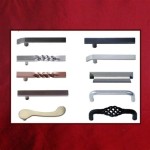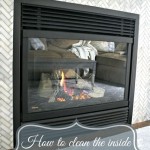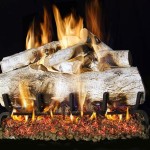Gas Fireplace Table: A Comprehensive Guide
A gas fireplace table represents a fusion of functional furniture and ambient heating, providing both a visual centerpiece and a source of warmth for outdoor or indoor spaces. These tables, powered by either propane or natural gas, offer a convenient alternative to traditional wood-burning fireplaces, eliminating the need for firewood and minimizing smoke and ash. Understanding the various aspects of gas fireplace tables, including their design, functionality, safety features, and maintenance requirements, is essential for making an informed purchasing decision and ensuring long-term enjoyment.
The market for gas fireplace tables encompasses a wide range of styles, sizes, and materials. Options range from minimalist, modern designs to rustic, traditional aesthetics, allowing consumers to select a model that complements their existing décor. The choice of fuel, propane or natural gas, also influences the installation process and operational considerations. Propane-fueled tables require a propane tank connection, while natural gas models necessitate a connection to a natural gas line. This article provides a detailed overview of gas fireplace tables, covering their key features, benefits, and considerations for safe and efficient operation.
Design and Materials
The design of a gas fireplace table significantly impacts its aesthetic appeal and suitability for different environments. Tables are available in various shapes, including rectangular, square, round, and oval. The choice of shape often depends on the intended use and the available space. Rectangular tables, for example, may be preferred for larger patios or deck areas, while smaller, round tables might be more suitable for intimate seating arrangements.
The materials used in the construction of a gas fireplace table influence its durability, weather resistance, and overall appearance. Common materials include:
- Concrete: Concrete tables offer a contemporary, industrial aesthetic. They are resistant to heat and weather, making them a durable option for outdoor use. However, concrete can be heavy and may require additional reinforcement for decks or patios.
- Metal: Metal frames, typically made of aluminum or steel, provide structural support and can be powder-coated for added weather resistance. Metal tables often feature sleek, modern designs and are relatively lightweight compared to concrete.
- Wood: Wood tables offer a traditional, rustic look. Wood can be stained or painted to match existing outdoor furniture. However, wood requires regular maintenance to prevent rot and decay, particularly in humid climates.
- Stone: Stone tables, often made of faux stone or composite materials, offer a natural, textured appearance. Stone-look tables are typically less expensive than solid stone but still provide a durable and weather-resistant surface.
Furthermore, the burner pan, which houses the gas burner and decorative elements such as lava rock or glass beads, is typically constructed of stainless steel to withstand high temperatures and prevent corrosion. The quality of the burner pan material directly impacts the longevity and performance of the fireplace table.
Fuel Options and Operation
Gas fireplace tables are designed to operate on either propane or natural gas. The choice between these fuel options depends on factors such as convenience, availability, and cost. Propane-fueled tables offer greater portability, as they can be easily moved to different locations without requiring a permanent gas line connection. Propane tanks are readily available and can be refilled or exchanged at various retail outlets. However, propane tank storage can be a concern, and the cost of propane can fluctuate depending on market conditions.
Natural gas tables, on the other hand, require a connection to a natural gas line, which may necessitate professional installation. Natural gas is generally less expensive than propane and offers a continuous fuel supply, eliminating the need for tank refills or exchanges. However, natural gas tables are less portable and require a fixed location near a gas line.
The operation of a gas fireplace table typically involves a simple ignition mechanism, such as a push-button igniter or a manual lighting system. Most tables feature adjustable flame height controls, allowing users to customize the heat output and ambiance. Some models also include safety features such as flame failure devices, which automatically shut off the gas supply if the flame is extinguished unexpectedly.
Regular inspection of the gas lines, burner pan, and ignition system is essential to ensure safe and efficient operation. It is also important to follow the manufacturer's instructions for lighting, extinguishing, and maintaining the fireplace table.
Safety and Maintenance
Safety is paramount when operating any gas-powered appliance, including gas fireplace tables. Adherence to safety guidelines and regular maintenance are crucial for preventing accidents and ensuring long-term reliability. Key safety considerations include:
- Proper Ventilation: Gas fireplace tables should be used in well-ventilated areas to prevent the buildup of carbon monoxide. Indoor use requires specific models certified for indoor operation and may necessitate professional installation to ensure adequate ventilation.
- Clearance from Combustible Materials: Maintain a safe distance between the fireplace table and any combustible materials, such as furniture, curtains, or vegetation. Refer to the manufacturer's instructions for recommended clearance distances.
- Regular Inspections: Inspect the gas lines, burner pan, and ignition system regularly for leaks, damage, or obstructions. Any signs of damage or malfunction should be addressed immediately by a qualified technician.
- Carbon Monoxide Detectors: Install carbon monoxide detectors in areas where gas appliances are used, including indoor spaces and enclosed patios.
- Child and Pet Safety: Supervise children and pets around the fireplace table to prevent accidental burns or injuries. Consider using a protective screen or barrier to prevent contact with the flame.
In addition to safety precautions, regular maintenance is essential for preserving the appearance and functionality of a gas fireplace table. Maintenance tasks include:
- Cleaning: Clean the table surface regularly with a mild detergent and water to remove dirt and debris. Avoid using abrasive cleaners or solvents that could damage the finish.
- Burner Pan Maintenance: Periodically remove and clean the burner pan to remove any accumulated debris or soot. Inspect the burner ports for clogs and clear them with a wire brush or compressed air.
- Gas Line Inspection: Check the gas lines for leaks using a soapy water solution. Apply the solution to the gas line connections and look for bubbles, which indicate a leak. If a leak is detected, shut off the gas supply and contact a qualified technician.
- Storage: When not in use, cover the fireplace table with a protective cover to shield it from the elements. Store propane tanks in a well-ventilated area away from heat sources and direct sunlight.
Following these safety guidelines and maintenance practices will help ensure the safe and enjoyable operation of a gas fireplace table for years to come.
Installation Considerations
The installation of a gas fireplace table varies depending on whether it is fueled by propane or natural gas. Propane-fueled tables are relatively straightforward to install, as they only require connecting a propane tank to the regulator and burner assembly. However, it is crucial to ensure that the propane tank is properly secured and that the connections are leak-free. Always follow the manufacturer's instructions for connecting and disconnecting the propane tank.
Natural gas tables, on the other hand, require a connection to a natural gas line, which typically necessitates professional installation. A qualified plumber or gas technician must install a gas line extension to the desired location and connect it to the fireplace table's gas inlet. This process involves adhering to local building codes and safety regulations, including pressure testing and leak testing the gas line. Improper installation can result in gas leaks, explosions, or carbon monoxide poisoning.
Before installing a gas fireplace table, it is essential to consider the following factors:
- Location: Choose a location that is level, stable, and free from obstructions. Ensure that there is adequate clearance from combustible materials and that the table is not placed in an area where it could be exposed to strong winds or heavy rainfall.
- Gas Line Access: For natural gas tables, ensure that there is easy access to a natural gas line. If a new gas line extension is required, obtain the necessary permits and hire a qualified professional to perform the installation.
- Ventilation: Ensure that the area is adequately ventilated to prevent the buildup of carbon monoxide. Indoor installations require specific models certified for indoor use and may necessitate professional installation to ensure proper ventilation.
- Local Codes and Regulations: Check with local building codes and regulations regarding the installation of gas appliances. Some jurisdictions may require permits or inspections before a gas fireplace table can be installed.
Proper installation is critical for ensuring the safe and efficient operation of a gas fireplace table. If you are not comfortable performing the installation yourself, it is best to hire a qualified professional to do the job.
In summary, a gas fireplace table offers a versatile and aesthetically pleasing solution for outdoor or indoor heating and ambiance. By understanding the various design options, fuel considerations, safety requirements, and installation procedures, consumers can make informed decisions and enjoy the benefits of this popular home amenity.

Outdoor Fireplaces Firepits Gas Fire Tables Table

Anchorage 56 Mgo Gas Fire Table With Concrete Tank Holder Rectangular Gray Wood Christopher Knight Home Target

Heatmaxx 42 In 60 000btu Fire Pit Propane Gas Table Rectangular Tabletop Srgf11666 The Home Depot

Outdoor Design Ideas For Gas Fire Tables Fireside Hearth Home

Fire Pits Vs Tables What S The Difference Outdoormarketplace

Oriflamme Rectangle Gas Fire Pit Table Hammered Copper

Outdoor Gas Firepit Table By Kaleidoscope

How To Build A Gas Fire Pit Coffee Table Firepits Direct Learning Center

Outdoor Great Room Gas Fire Pit Table Nw Natural Portland Or

Gas Fire Pit Table Alcott Stonewood S








